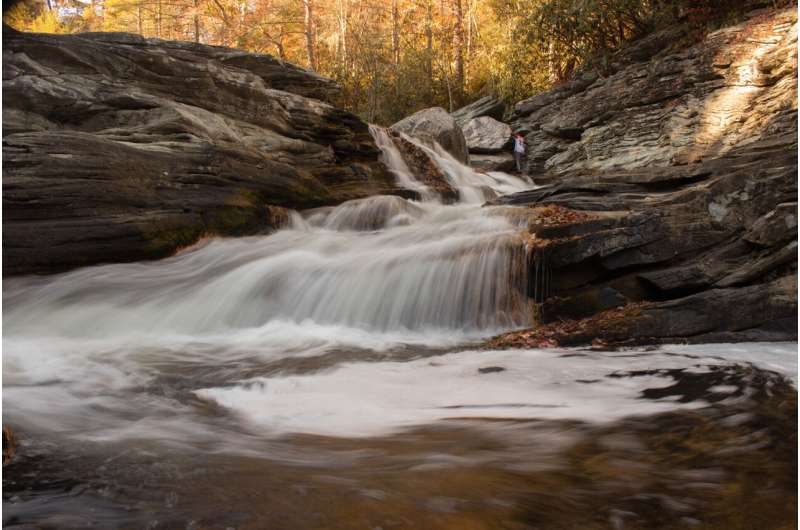This article has been reviewed according to Science X's editorial process and policies. Editors have highlighted the following attributes while ensuring the content's credibility:
fact-checked
peer-reviewed publication
trusted source
proofread
Examining the nuances of the forest-water connection

The infrastructure that brings drinking water to homes is an investment. For millions of people, forests are part of the system behind their faucets. Over the coming decades, many forested watersheds could be lost to development, lowering water quality and raising water treatment costs, according to a new study published in the journal Science of the Total Environment.
The research team focused on the forest-water connection in the southern U.S., a complex, heterogeneous region and, unfortunately, an ideal place for studying forest loss and worsening water quality. More than 80% of southern forests are privately owned, and the human population is growing. More southern forests have been lost to development than anywhere else in the U.S. When forests are replaced by parking lots, neighborhoods, and other development, the loss is essentially irreversible.
"To our knowledge, this is the first study to combine water quality data, land cover projections, and information about public water systems at a large scale," says Peter Caldwell, a Forest Service researcher and lead author of the new study.
"Our research team includes economists who will link water quality and water treatment costs," says Caldwell. "This line of research could one day inform programs that compensate private forest landowners for the ecosystem services their forested watersheds provide."
"We examined small watersheds across a broad region," says Katherine Martin, a researcher at North Carolina State University and a co-author of the study. "From Virginia to Texas, and across different forest types, soils, topography, and hydroclimates, our results confirm that forests are important for water quality."
Water running off forested lands generally has lower concentrations of nitrogen, phosphorous, and suspended sediment than water leaving any other type of land, as the study shows.
But there are nuances to the connection between clean water and forests. Some individual forested watersheds can have lower water quality, perhaps because of the type of soil and rock in the watershed, or sediment erosion in the stream channel. "These factors and others can make quantifying forest benefits challenging," says Caldwell.
Nevertheless, losing forests to any other land use would likely result in lower water quality, the study suggests. For example, developing just 1% of forests upstream of an intake could result in an 0.4% increase in the concentration of suspended sediment in the water, on average.
Municipalities that draw water directly from rivers are at higher risk of lower water quality, now and in the future. Water drawn from a river instead of from a reservoir already tends to need more treatment before the water is drinkable. Municipalities that draw water from smaller watersheds also face higher risks, since any forest lost in a small watershed can represent a larger proportion of its area.
Protecting forested watersheds can help safeguard future drinking water supplies. In general, the more forested land upstream of the intake facility, the better the water quality.
The new study is related to a large body of research on how people depend on forested watersheds for their drinking water.
The research team also works with coalitions such as Keeping Forests. "We bring scientists, business leaders, and conservation experts together to develop market-based approaches to support private landowners," says Laura Calandrella, executive director of Keeping Forests. "By illuminating the economic and environmental benefits of southern forests, we are empowering people to keep forests as forests."
More information: Peter V. Caldwell et al, Forested watersheds provide the highest water quality among all land cover types, but the benefit of this ecosystem service depends on landscape context, Science of The Total Environment (2023). DOI: 10.1016/j.scitotenv.2023.163550
Journal information: Science of the Total Environment
Provided by USDA Forest Service



















